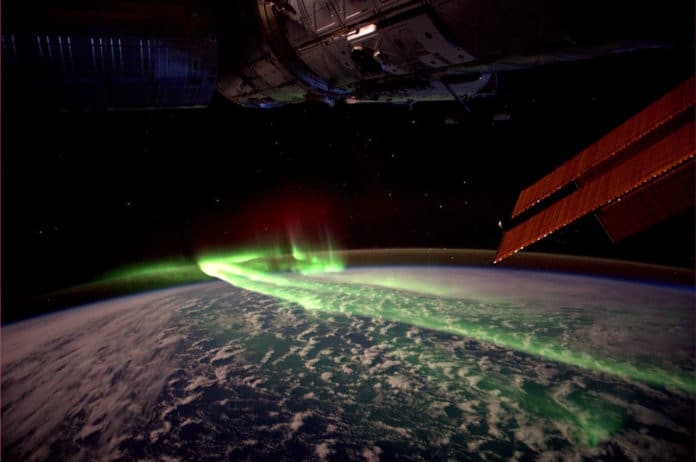Auroras are a natural phenomenon characterized by displaying a natural-colored (green, red, yellow, or white) light in the sky. Auroras shoot up when solar storms shoot out energy and particles that interact with gases in the atmosphere.
Solar eclipses are known to impact the ionosphere and thermosphere significantly, but how an eclipse influences the magnetosphere-ionosphere system is still unknown. A new study found that the eclipse affected auroras in the Northern and Southern hemispheres.
Tong Dang, University of Science and Technology of China, said, “Excitingly, we found that the aurora and upper atmosphere were disturbed in the Southern Hemisphere where the eclipse did not cover. This is because the upper atmosphere in the two hemispheres is connected through the magnetic field lines and the magnetosphere.”
On June 10, 2021, a dark shadow cast by the moon during a solar eclipse, spotted over the Earth’s northern polar region. This allows scientists to study the impacts of natural events on Earth’s geospace.
It was found that the eclipse created changes in auroras in both of Earth’s hemispheres. These changes occured due to connections through the planet’s magnetic field.
The eclipse also created rings around the poles to form currents of connections through the planet’s magnetic field, changing the aurora’s activity. These rings are formed due to disturbance in electron density in the atmosphere by charged aurora particles.
Scientists created a model to understand how the June solar eclipse affected Earth’s geospace for this study. The model combines the upper atmosphere, the magnetosphere, and electrical currents flowing in this system.
Due to the complexity of the current system in the ionosphere, scientists focused on the currents flowing between the magnetosphere and the ionosphere along the magnetic field lines. These lines run out from the South Pole, around the planet to the North Pole, and through its axis.
They were surprised that the eclipse caused even stronger auroral activity in the unobscured Southern Hemisphere than in the Northern Hemisphere.
Toshi Nishimura, a space physicist at Boston University who was not involved in the research, said, “This is unique and interesting research that modeled global impacts of the solar eclipse. Usually, people don’t think about the connection between the solar eclipse and aurora because the eclipse is daytime, and the aurora is a phenomenon in the night at high latitudes. But an eclipse can sometimes occur at high latitudes, and this research demonstrated its impact on aurora.”
Journal Reference:
- Xuetao Chen et al. Global Effects of a Polar Solar Eclipse on the Coupled Magnetosphere-Ionosphere System. DOI: 10.1029/2021GL096471
